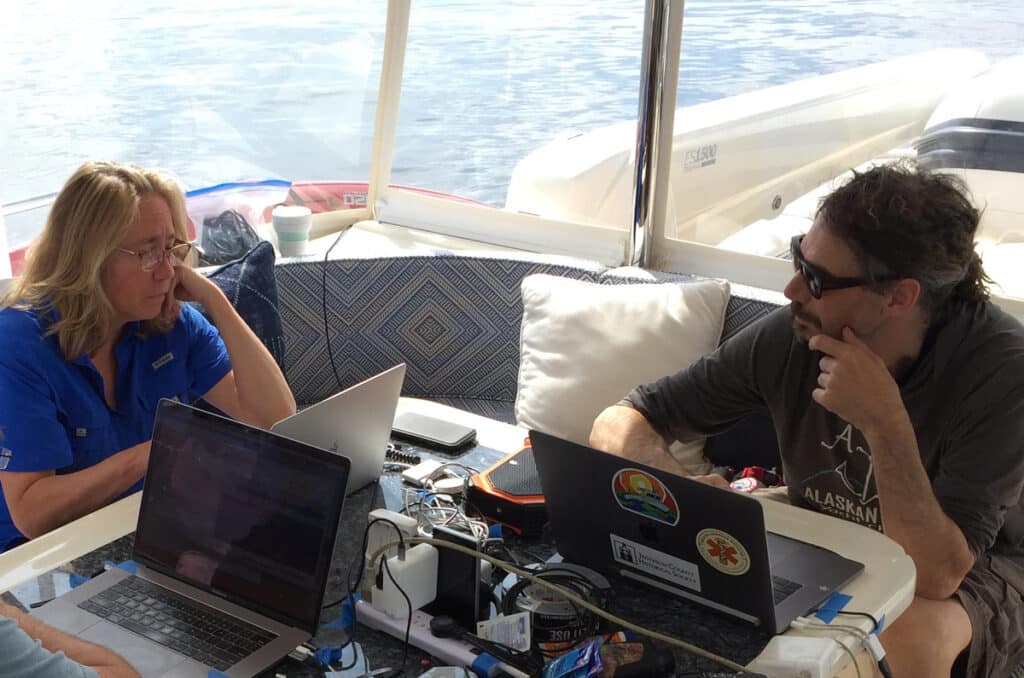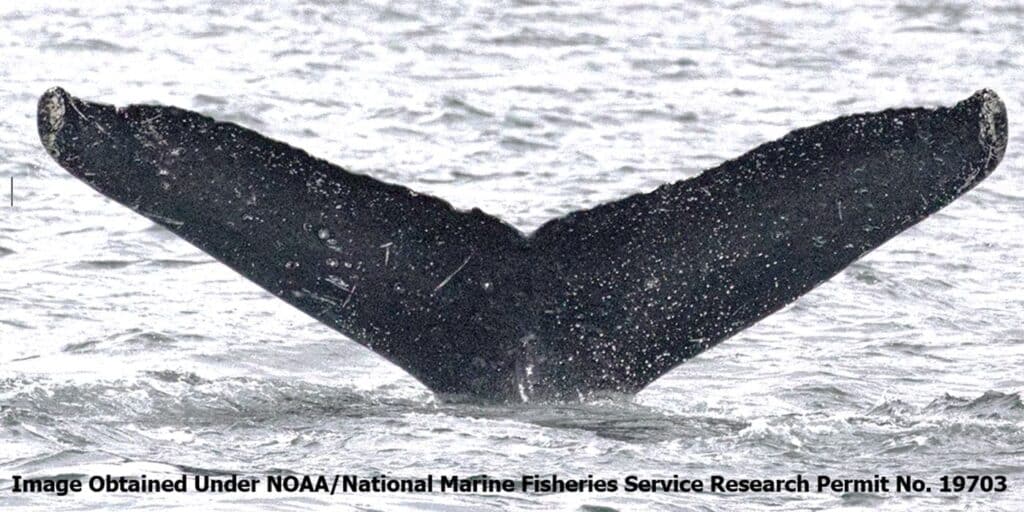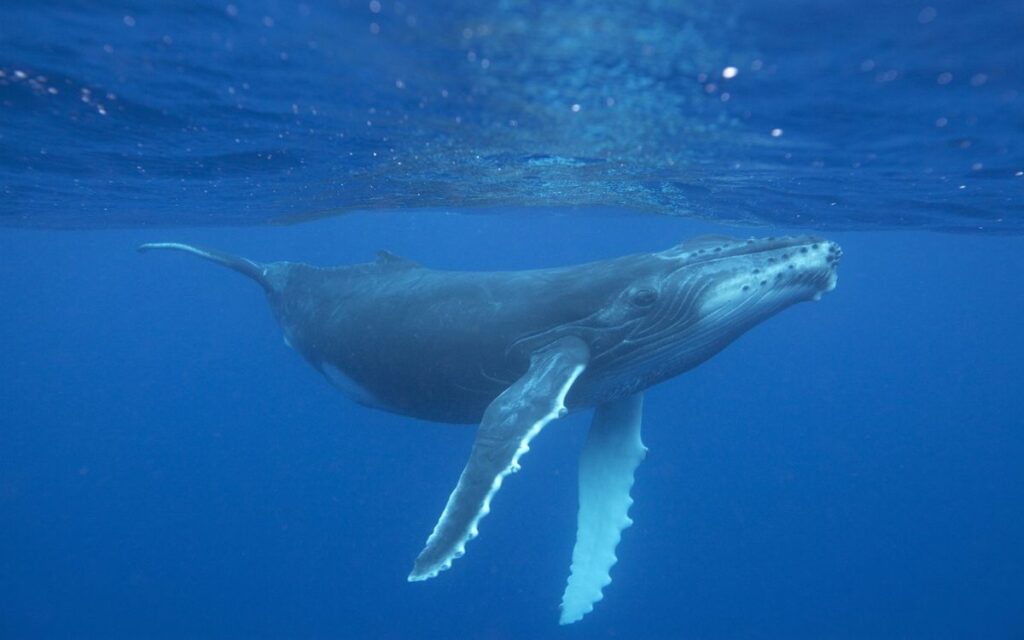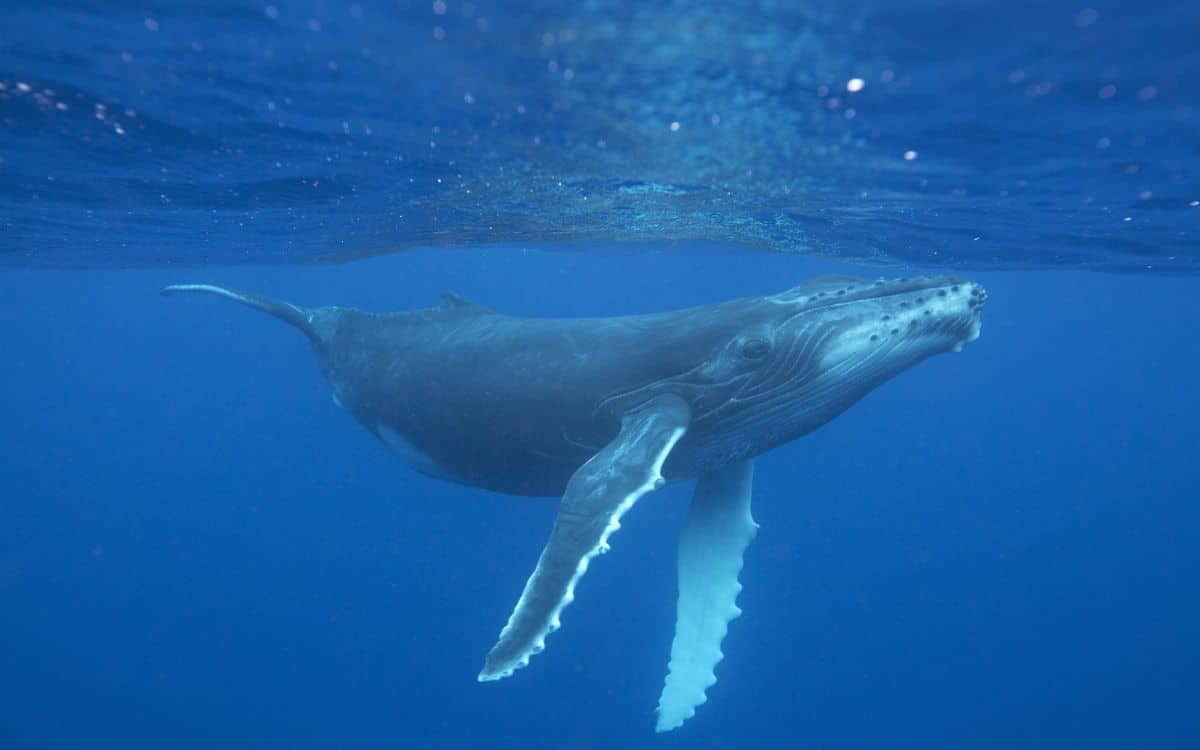Scientists hold groundbreaking 20-minute ‘conversation’ with humpback whale
- Scientists have had a conversation with a 38-year-old humpback whale named Twain
- It lasted for 20 minutes and was captured on underwater speakers
- The research team’s findings could be used to develop tools to communicate with aliens
Published on Dec 30, 2023 at 4:59 PM (UTC+4)
by Amelia Jean Hershman-Jones
Last updated on Mar 06, 2024 at 2:15 PM (UTC+4)
Edited by
Amelia Jean Hershman-Jones
In a groundbreaking encounter, a research team has engaged in a ‘conversation’ with a humpback whale.
It’s being labelled an amazing breakthrough in the field of non-human intelligence.
They used a recorded humpback ‘contact’ call that was played into the ocean via an underwater speaker.
READ MORE! Onboard the luxurious 690-foot 5-star hotel for the seas Seabourn Ovation
38-year-old humpback whale, Twain, responded and joined in the ‘conversation’ in response to the team’s greeting.
He approached and circled their boat during the 20-minute exchange.
Twain consistently matched the interval variations between each playback call.
Whale-SETI (Whale Search for Extraterrestrial Intelligence) researchers believe this is the first ‘conversation’ between humans and humpback whales.
The back-and-forth was conducted in in the humpback whale ‘language’.

SETI Institute
Whale language is just one of the mysteries of the ocean – one woman recently making an amazing discovery as she walked along the beach.
The Whale-SETI study aims to develop intelligence filters for the search for aliens and extraterrestrial life and their communication in space.
Just a couple of months ago, scientists revealed a mysterious sound that came from a ‘UFO’.
The Whale-SETI team, consisting of scientists from the SETI Institute, University of California Davis, and the Alaska Whale Foundation, will use information theory to quantify communicative complexity.

The scientists are already preparing a second paper on non-audio communicative behavior.
Details of the ‘conversation’ as well as the team’s findings can be found in the recent issue of the journal Peer J.
It’s titled “Interactive Bioacoustic Playback as a Tool for Detecting and Exploring Nonhuman Intelligence: ‘Conversing’ with an Alaskan Humpback Whale.”
Lead author, Dr. Brenda McCowan of U.C. Davis, explained the significance of this ‘conversation’.
“We believe this is the first such communicative exchange between humans and humpback whales in the humpback ‘language,’” she said.

Dr. Fred Sharpe of the Alaska Whale Foundation further emphasized the intelligence of humpback whales.
He touched on their abilities to engage in complex social systems and create tools such as bubble nets to catch fish.
Communication and ‘conversation’ be it via songs or social calls facilitates this.
The behavior supports an important assumption in the search for extraterrestrial intelligence.
The scientists are drawing parallels to studying Antarctica as a proxy for Mars.

The Whale-SETI team will utilize their findings from the study of intelligent, terrestrial, non-human communication systems to develop filters that can be applied to potential extraterrestrial signals received.
“Because of current limitations on technology, an important assumption of the search for extraterrestrial intelligence is that extraterrestrials will be interested in making contact and so target human receivers,” Dr. Laurance Doyle of the SETI Institute, coauthor of the paper said.
“This important assumption is certainly supported by the behavior of humpback whales.”
The team will be employing the mathematics of information theory to quantify the communicative complexity, such as the rule structure embedded in a message received from space.
The aim is to eventually decode whale communication under the hypothesis that whale sounds contain complex, intelligent messages akin to languages used by humans or aliens.
Watch a message you can understand from the team aboard the International Space Station below:
Advanced technology was key with researchers using sophisticated hydrophones and AI algorithms to record and analyze whale sounds.
The AI, trained on vast datasets of whale calls and human languages, seeks patterns and structures.
These could indicate language-like characteristics like repetitive patterns and variations in whale songs that suggest a level of intentional communication.
These patterns have already been found to vary among different whale species, indicating distinct ‘dialects’ or ‘languages.’
This method will not only help decipher the complexity of whale communication, but enhance our understanding of language development in intelligent species too.
DISCOVER SBX CARS: The global premium car auction platform powered by Supercar Blondie

London-based Amelia cut her journalistic teeth covering all things lifestyle, wellness and luxury in the UK capital. Fast-forward a decade and the experienced content creator and editor has put pen to paper for glossy magazines, busy newsrooms and coveted brands. When her OOO is on you can find her spending quality time with her young family, in the gym or exploring the city she loves.





